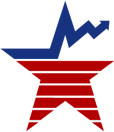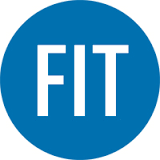What do they do?
Design clothing and accessories. Create original designs or adapt fashion trends.
Also known as:
Apparel and Accessories Designer, Apparel Designer, Clothing Designer, Costume Designer, Dance Costume Designer, Designer, Fashion Design Contractor, Fashion Designer, Fashion Graphic Designer, Fashion Stylist, Handbag Designer, Product Developer, Shoe Designer, Sweater Designer
-
0%
Change
Ranks #31 in job growth rate40Job Openings
Ranks #10 in net job growth
Looking for colleges that offer a specific major? Use the College Match Tool to find your best-matched schools and discover your estimated Net Price!
- Bachelor's degree (53%)
- Associate's degree (12%)
- Some college, no degree (11%)
- High school diploma equivalent (11%)
- Master's degree (9%)
- Less than high school diploma (3%)
- Doctorate or Professional Degree (1%)
Most Popular Majors that prepare Fashion Designers
-
#1
-
Degrees Granted
112
-
Female Students
96
-
Male Students
16
-
Median Starting Salary
$45,300
-
-
#2
-
Degrees Granted
8
-
Female Students
8
-
Male Students
0
-
Median Starting Salary
$37,200
-
-
#3
-
Degrees Granted
1
-
Female Students
1
-
Male Students
0
-
Median Starting Salary
$35,825
-
People in this career often have these skills:
- Active Listening - Giving full attention to what other people are saying, taking time to understand the points being made, asking questions as appropriate, and not interrupting at inappropriate times.
- Speaking - Talking to others to convey information effectively.
- Critical Thinking - Using logic and reasoning to identify the strengths and weaknesses of alternative solutions, conclusions, or approaches to problems.
- Active Learning - Understanding the implications of new information for both current and future problem-solving and decision-making.
- Social Perceptiveness - Being aware of others' reactions and understanding why they react as they do.
- Coordination - Adjusting actions in relation to others' actions.
- Judgment and Decision Making - Considering the relative costs and benefits of potential actions to choose the most appropriate one.
- Time Management - Managing one's own time and the time of others.
- Reading Comprehension - Understanding written sentences and paragraphs in work-related documents.
- Persuasion - Persuading others to change their minds or behavior.
- Negotiation - Bringing others together and trying to reconcile differences.
- Complex Problem Solving - Identifying complex problems and reviewing related information to develop and evaluate options and implement solutions.
- Monitoring - Monitoring/Assessing performance of yourself, other individuals, or organizations to make improvements or take corrective action.
- Instructing - Teaching others how to do something.
- Service Orientation - Actively looking for ways to help people.
- Management of Personnel Resources - Motivating, developing, and directing people as they work, identifying the best people for the job.
- Writing - Communicating effectively in writing as appropriate for the needs of the audience.
People in this career often know a lot about:
- Design - Knowledge of design techniques, tools, and principles involved in production of precision technical plans, blueprints, drawings, and models.
- Computers and Electronics - Knowledge of circuit boards, processors, chips, electronic equipment, and computer hardware and software, including applications and programming.
People in this career often have talent in:
- Originality - The ability to come up with unusual or clever ideas about a given topic or situation, or to develop creative ways to solve a problem.
- Written Comprehension - The ability to read and understand information and ideas presented in writing.
- Oral Expression - The ability to communicate information and ideas in speaking so others will understand.
- Fluency of Ideas - The ability to come up with a number of ideas about a topic (the number of ideas is important, not their quality, correctness, or creativity).
- Oral Comprehension - The ability to listen to and understand information and ideas presented through spoken words and sentences.
- Visualization - The ability to imagine how something will look after it is moved around or when its parts are moved or rearranged.
- Near Vision - The ability to see details at close range (within a few feet of the observer).
- Visual Color Discrimination - The ability to match or detect differences between colors, including shades of color and brightness.
- Speech Recognition - The ability to identify and understand the speech of another person.
- Written Expression - The ability to communicate information and ideas in writing so others will understand.
- Problem Sensitivity - The ability to tell when something is wrong or is likely to go wrong. It does not involve solving the problem, only recognizing that there is a problem.
- Deductive Reasoning - The ability to apply general rules to specific problems to produce answers that make sense.
- Category Flexibility - The ability to generate or use different sets of rules for combining or grouping things in different ways.
- Inductive Reasoning - The ability to combine pieces of information to form general rules or conclusions (includes finding a relationship among seemingly unrelated events).
- Speech Clarity - The ability to speak clearly so others can understand you.
People in this career often do these activities:
- Draw detailed or technical illustrations.
- Write informational material.
- Develop artistic or design concepts for decoration, exhibition, or commercial purposes.
- Collaborate with others to develop or refine designs.
- Select materials or props.
- Promote products, activities, or organizations.
- Coordinate design activities.
- Conduct market research.
- Build models, patterns, or templates.
- Monitor current trends.
- Maintain inventories of materials, equipment, or products.
- Conduct research to inform art, designs, or other work.
- Study scripts to determine project requirements.
This page includes data from:

 Occupation statistics: USDOL U.S. Bureau of Labor Statistics Occupational Employment Statistics
Occupation statistics: USDOL U.S. Bureau of Labor Statistics Occupational Employment Statistics
 Videos: CareerOneStop, USDOL/ETA and the Minnesota Department of Employment & Economic Development
Videos: CareerOneStop, USDOL/ETA and the Minnesota Department of Employment & Economic Development




















